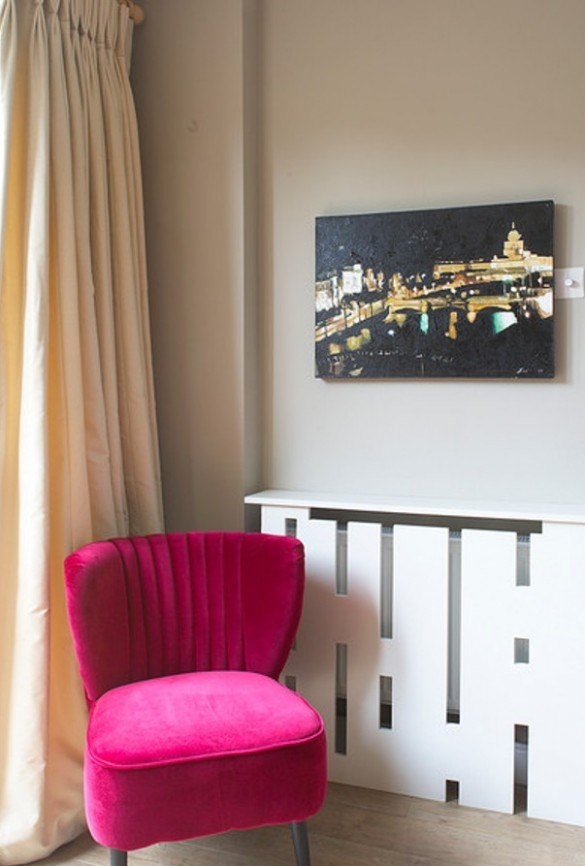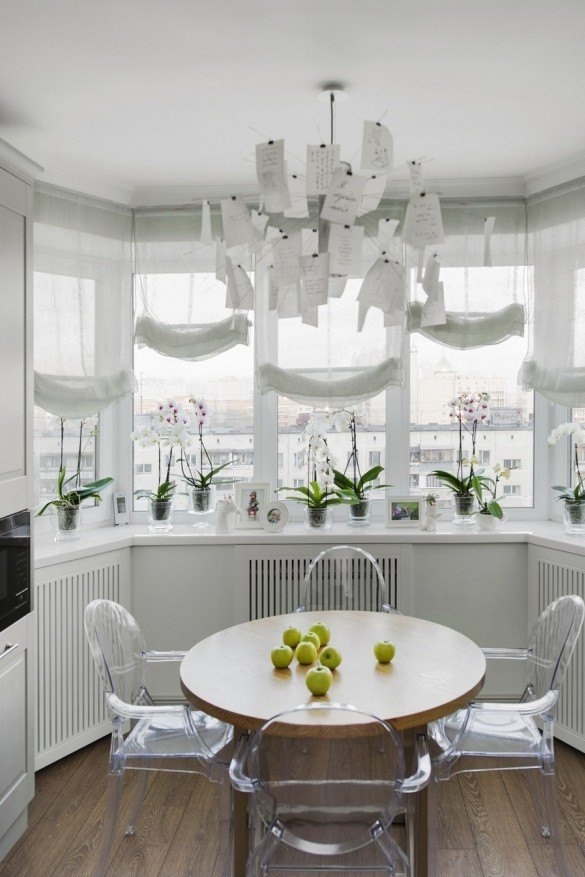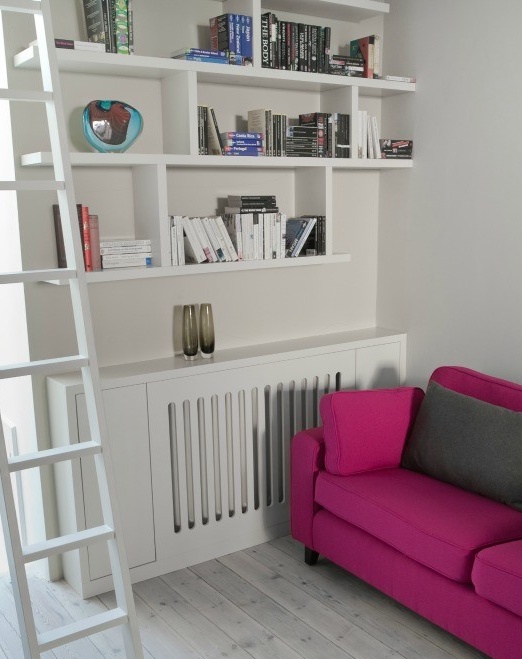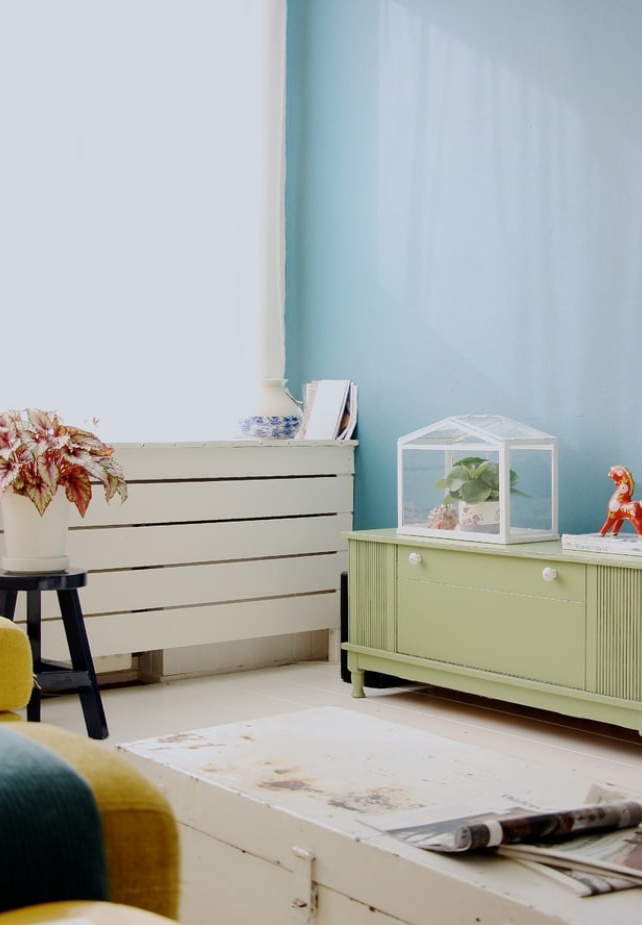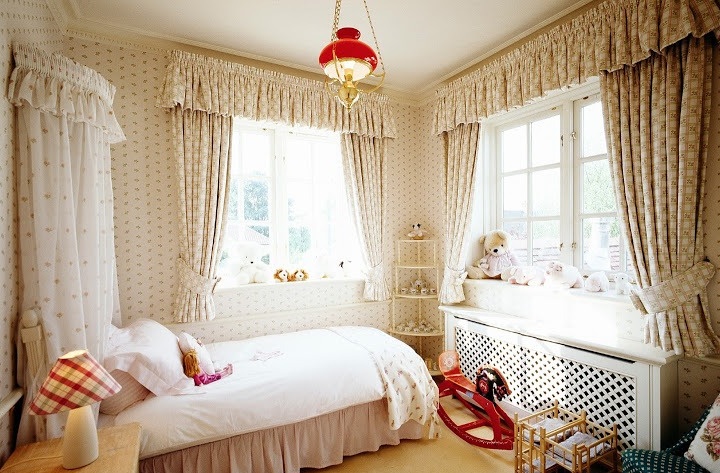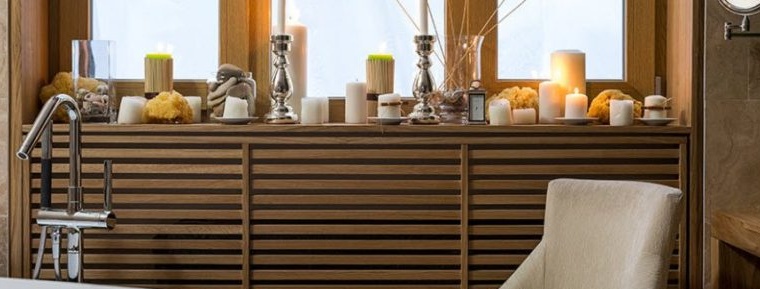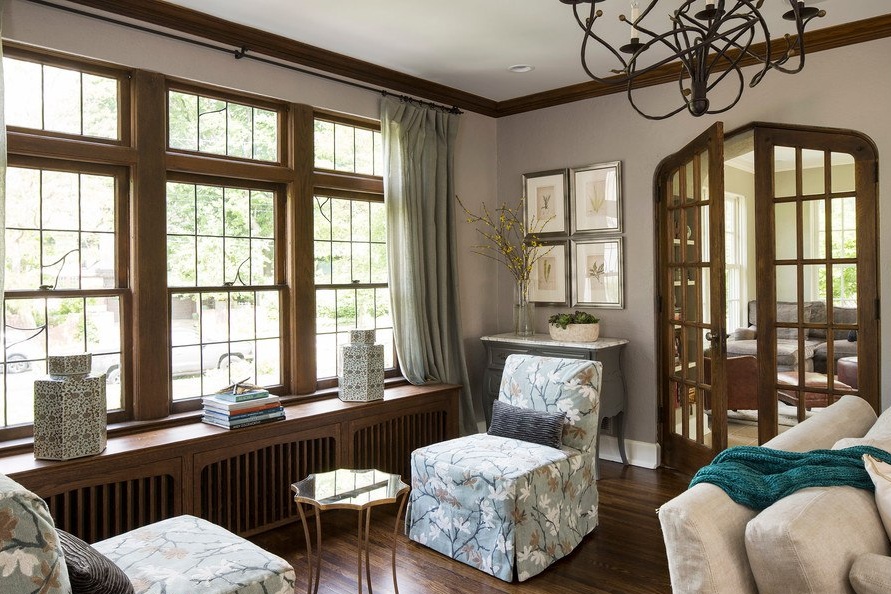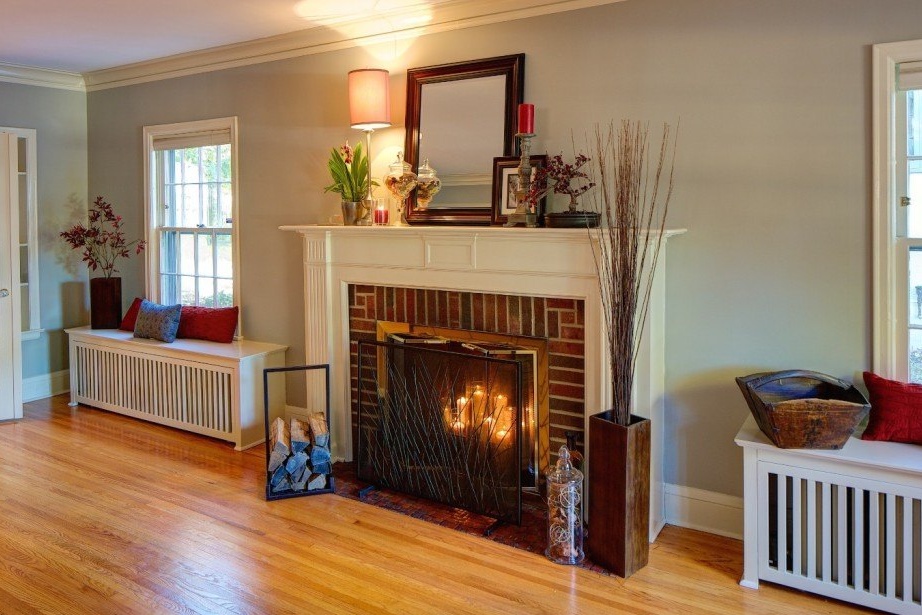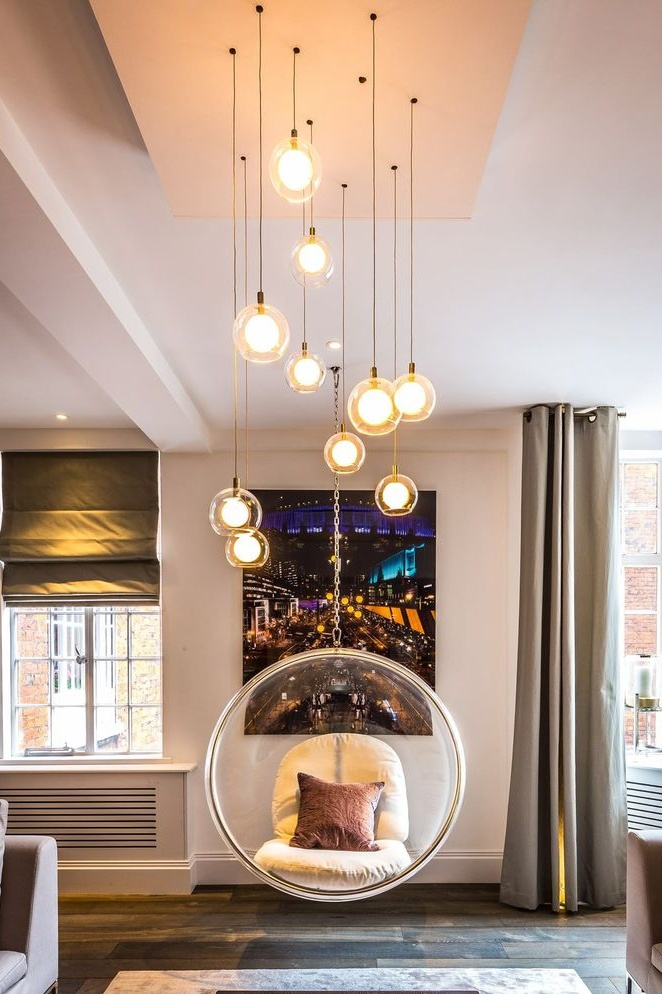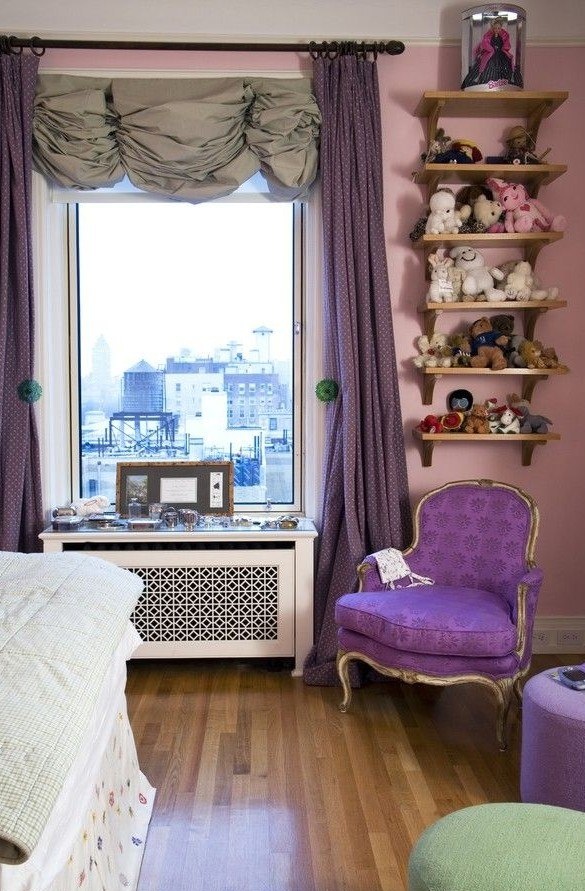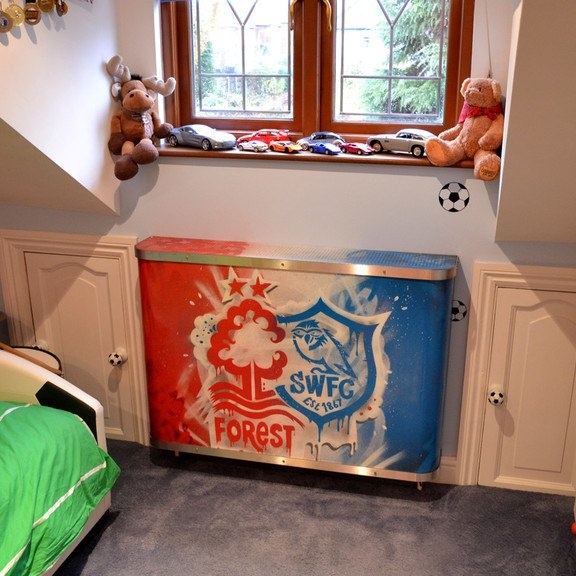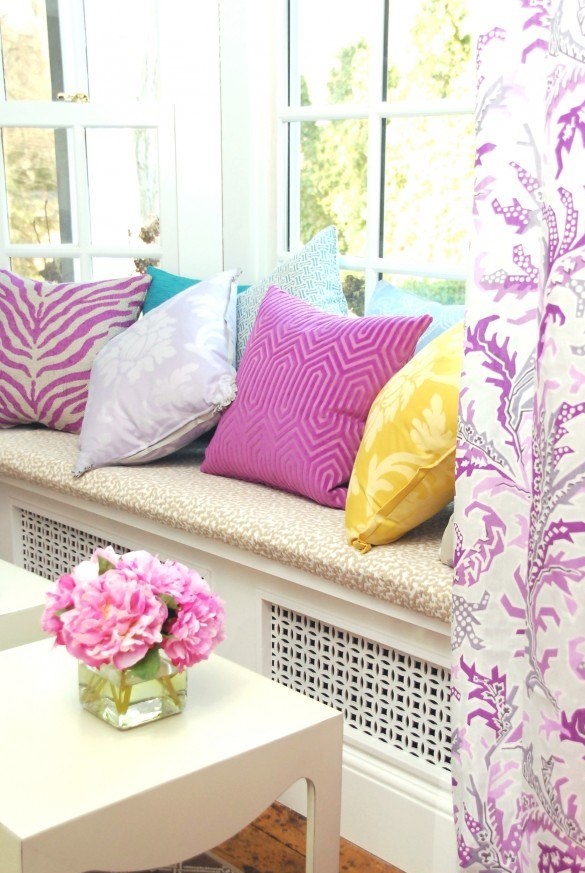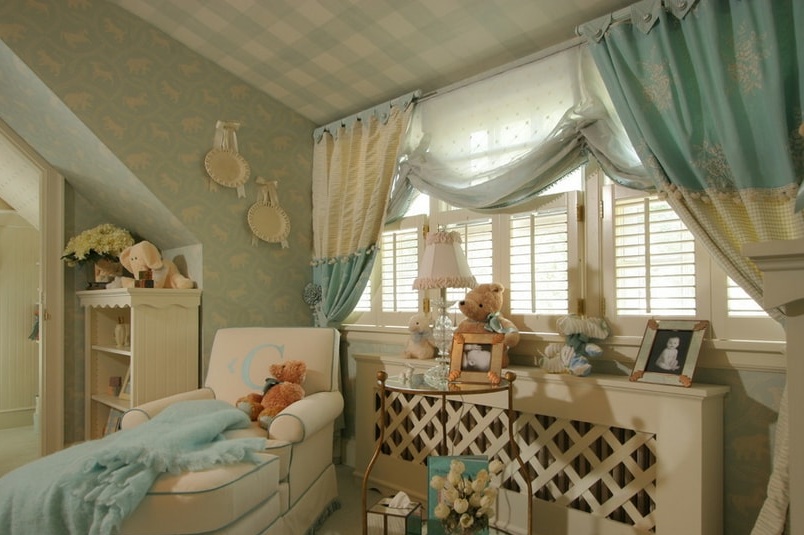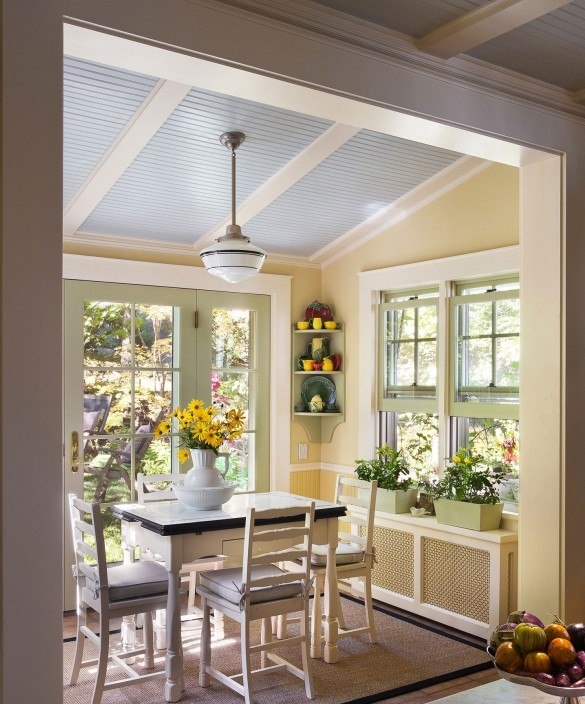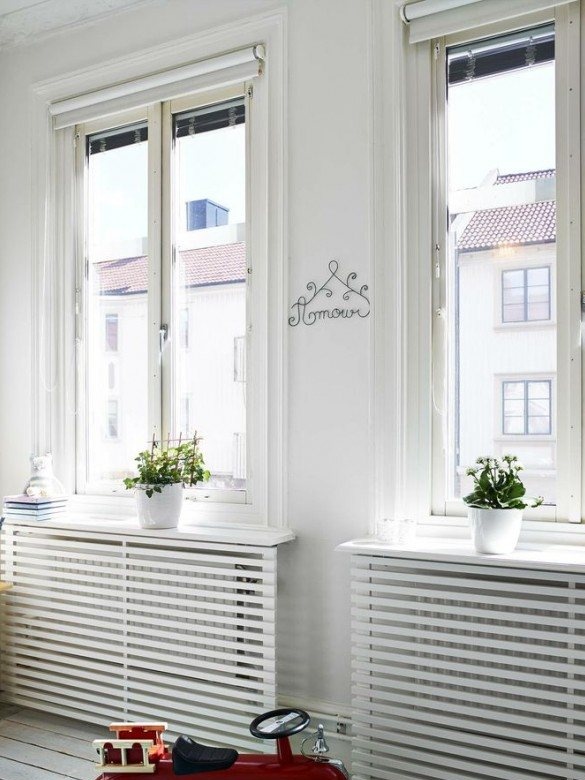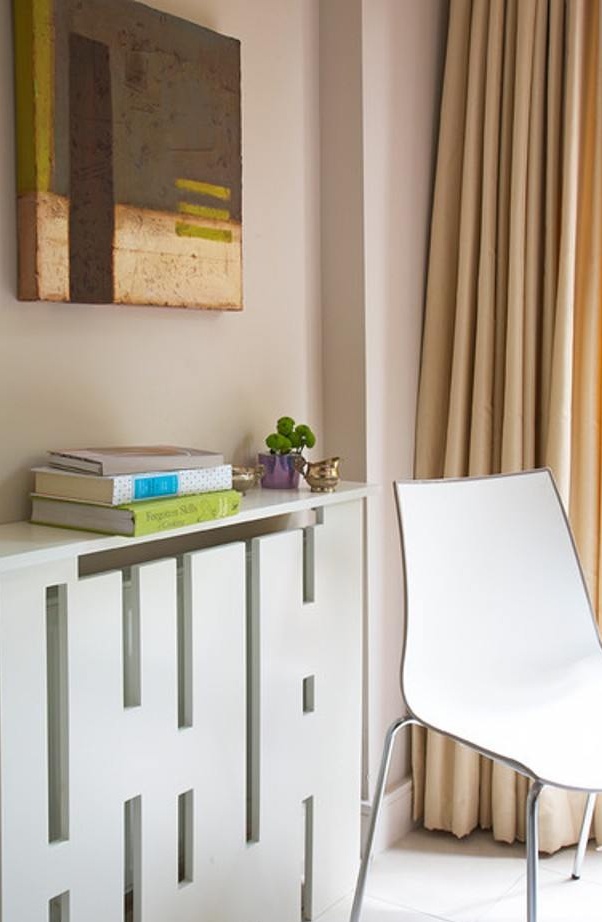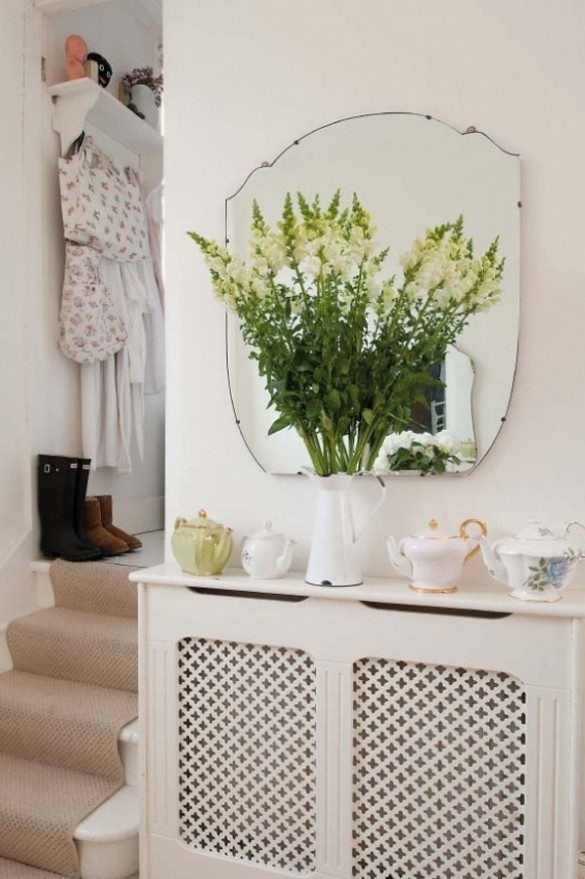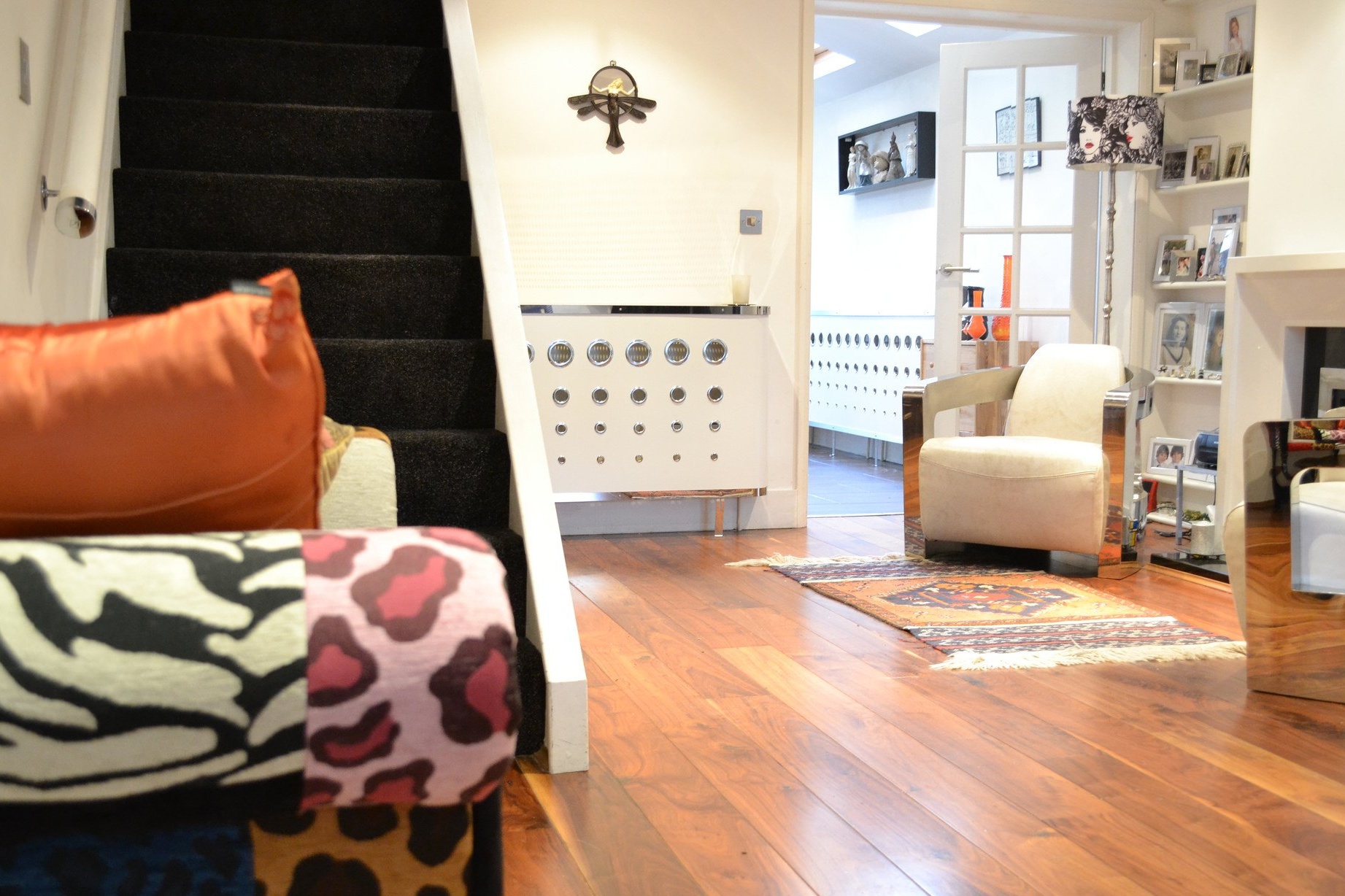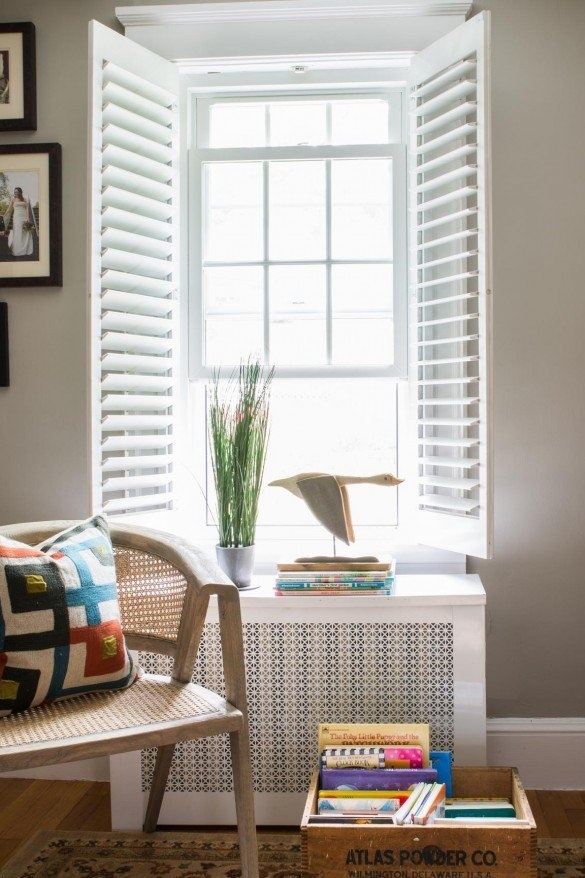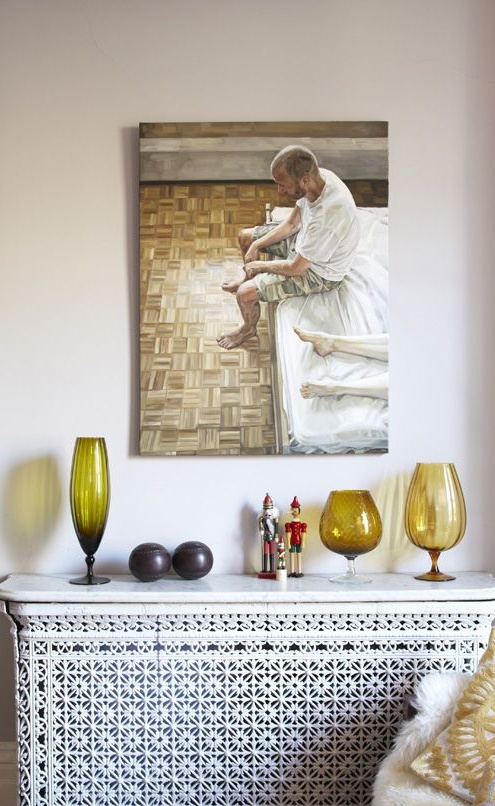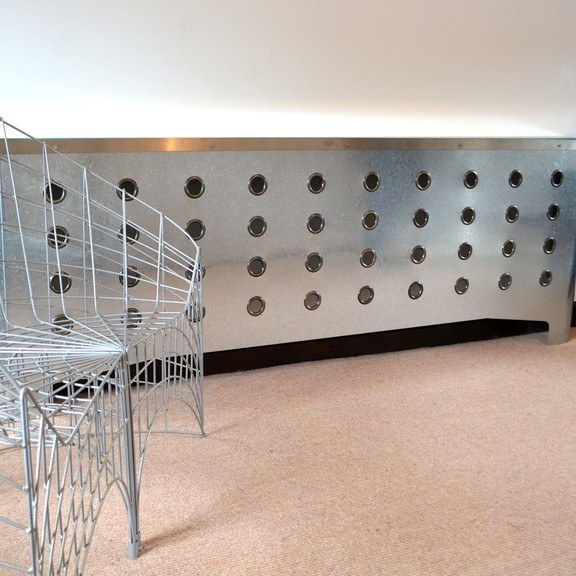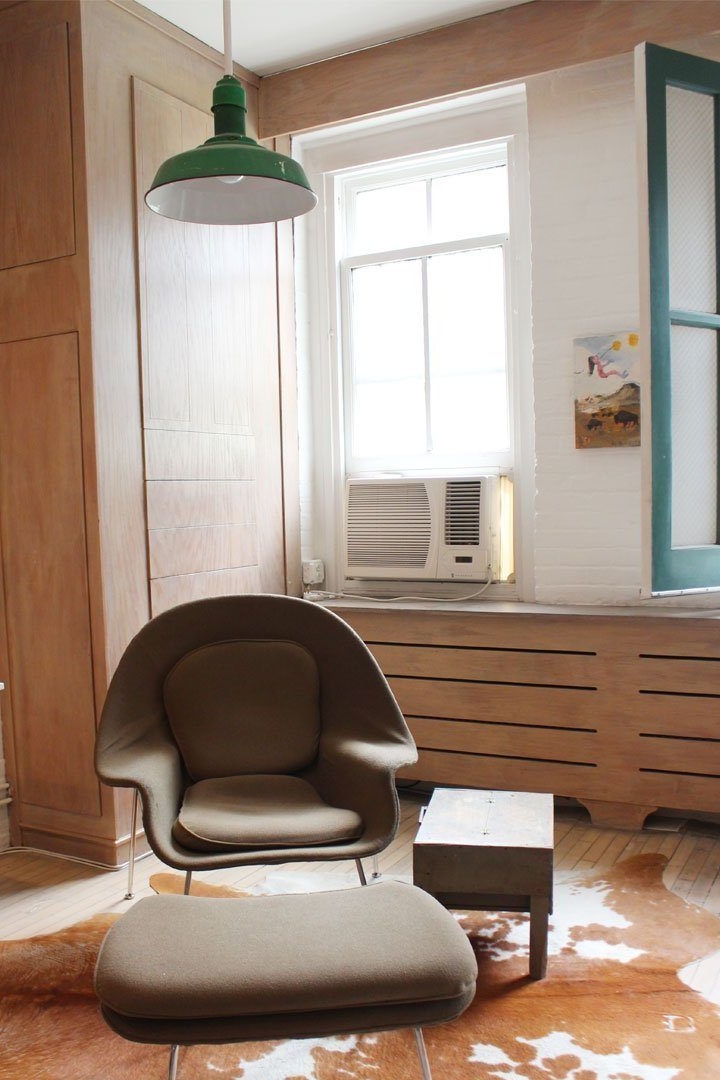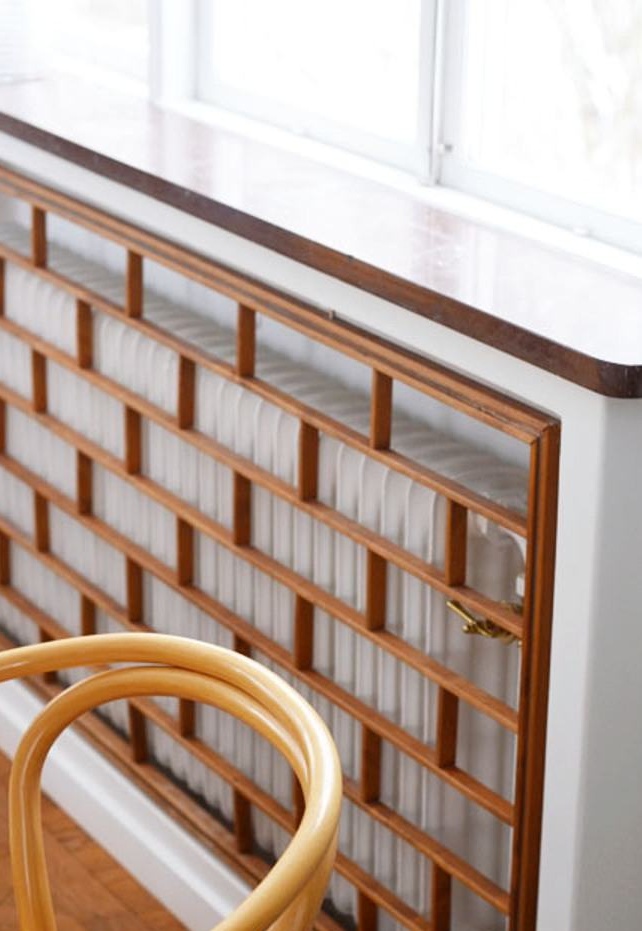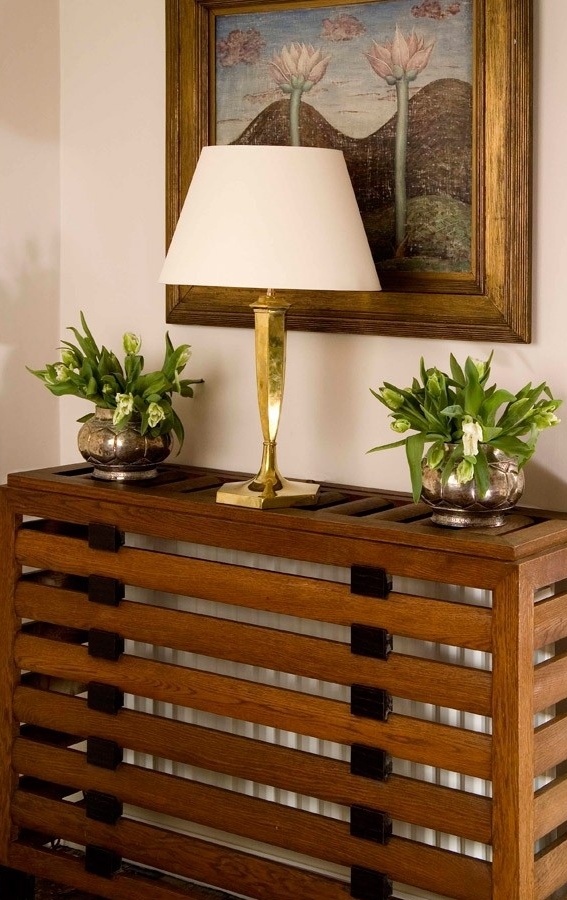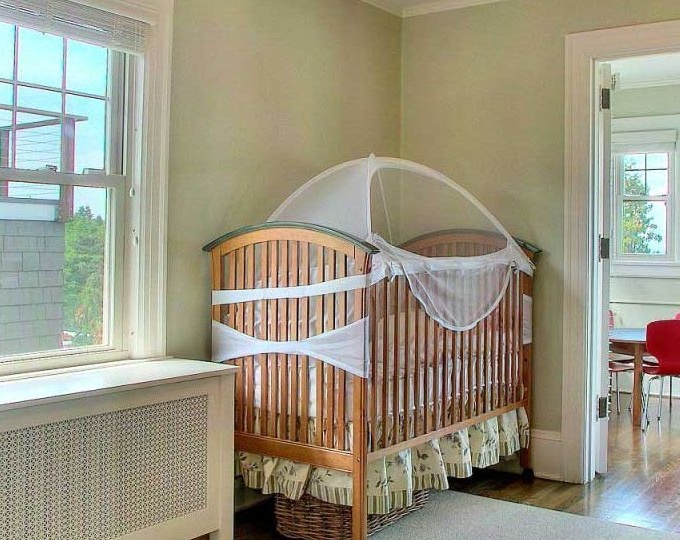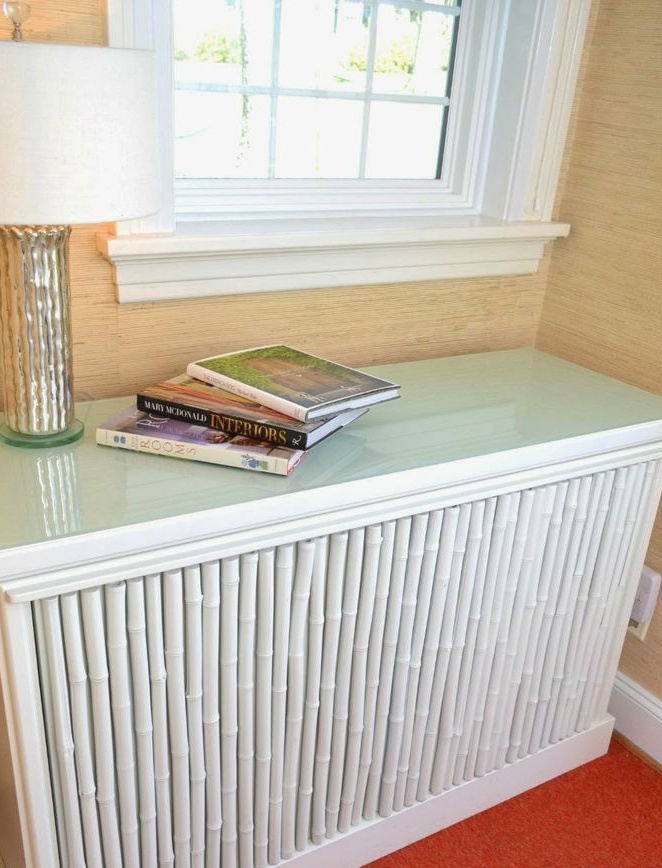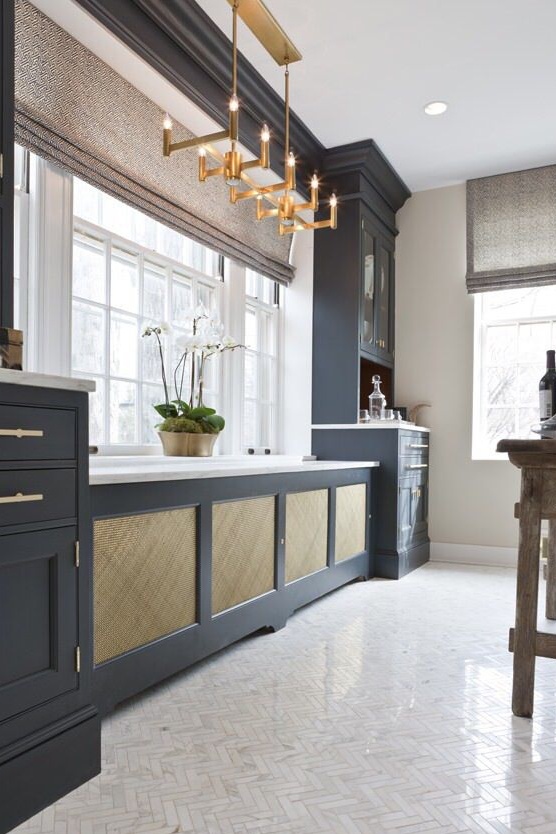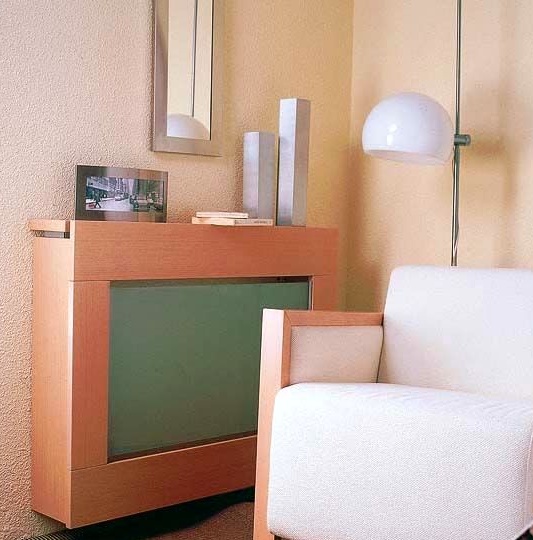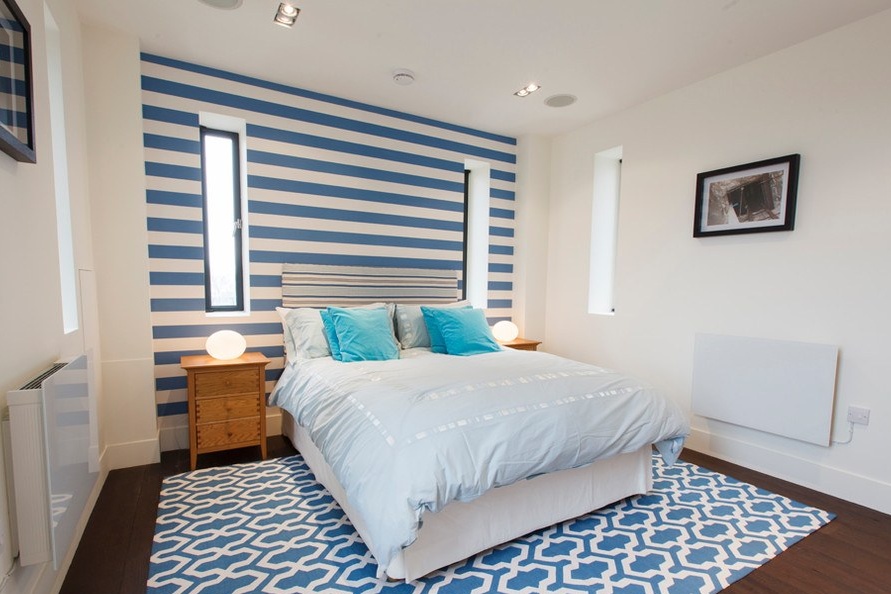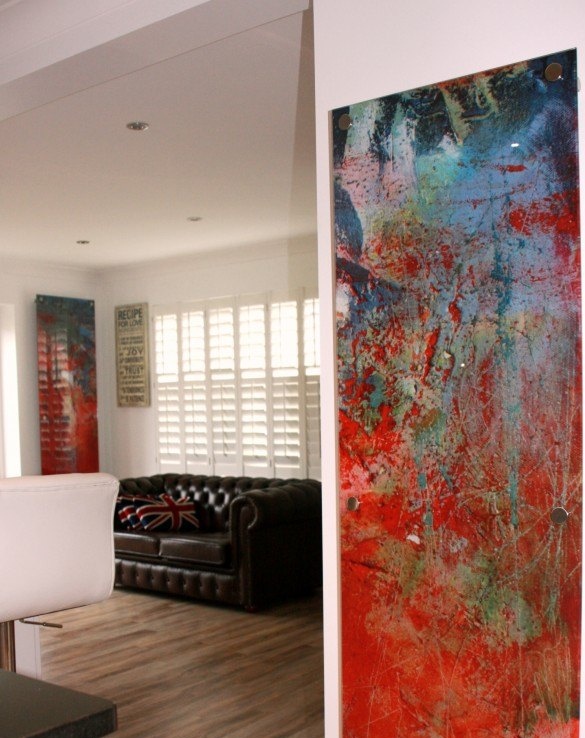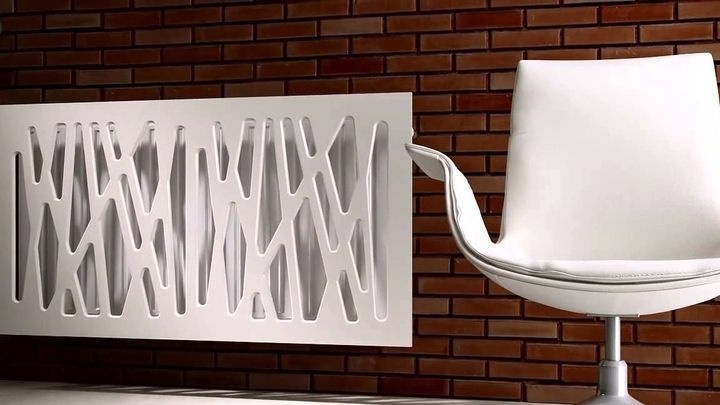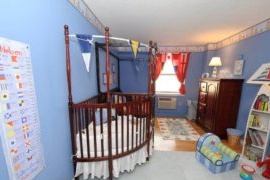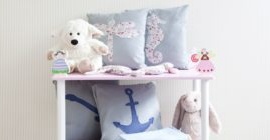Screens for radiators: decorative cover for unsightly interior elements
Today, modern manufacturers offer a wide selection of heating devices, but nevertheless, many new apartment buildings install standard batteries, and residents of old apartments remain completely with the Soviet accordion models. Not everyone has the opportunity to replace the batteries with modern ones (and this is not always advisable), and old ones may not fit into the updated interior. The best solution in this case is to install special screens for radiators.
Such designs serve not only as a decorative component of the interior, hiding bulky and ugly batteries, but also reliably protect children and pets from unwanted contacts with a heating device. This is especially true for families with very young children, as well as gyms, clinics and child care facilities, where the presence of such bars is mandatory. In apartments, such screens most often perform an aesthetic function. With a competent choice, they can direct warm air in the right direction, which at times increases the efficiency of heating.
Basic screen selection criteria for radiators
- screens should not impair heat transfer;
- control valves should be easily accessible;
- in case of an accident, screens should be quickly and easily removed;
- If in doubt of a reliable battery mount, choose a lightweight screen model.
Varieties of decorative screens
- flat, covering only the front of the battery;
- hinged with a cover or without a cover;
- hinged boxes covering the battery on all sides.
Boxes or models with a lid can also be found in the original and practical use in the form of a stand or stand, especially in the summer. In the heating season, it is better not to put objects on the lid so that they do not heat up and do not interfere with the free circulation of warm air.
If the radiator is located in a window sill, a flat hinged or movable panel with legs is suitable. Such a design is an excellent decor option that does not occupy a usable area.
Screens can be made of different materials - metal, wood, glass, plastic. There are also combined models containing glass and HDF, metal and wood, etc.
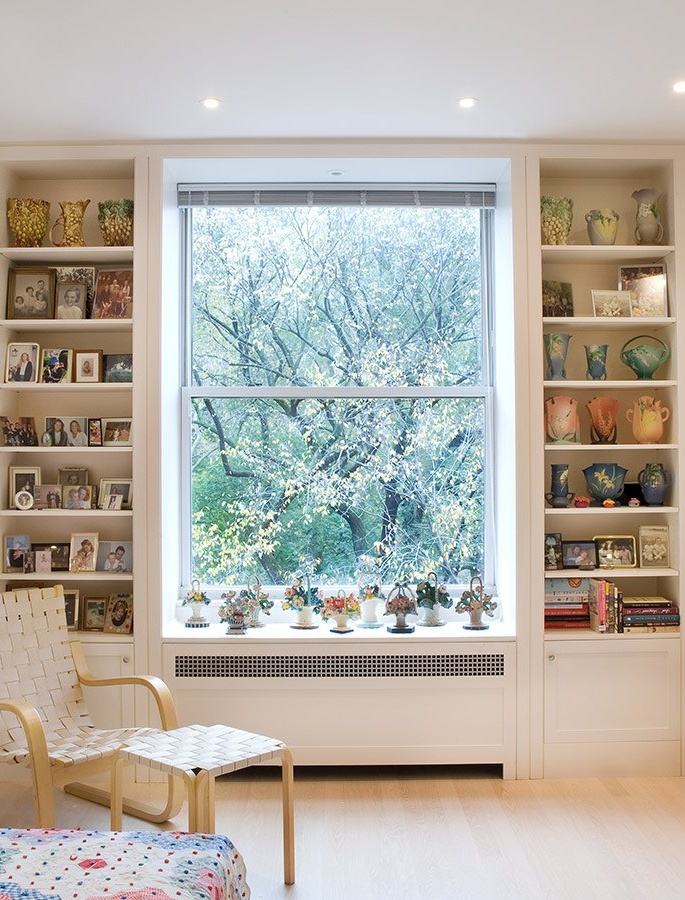
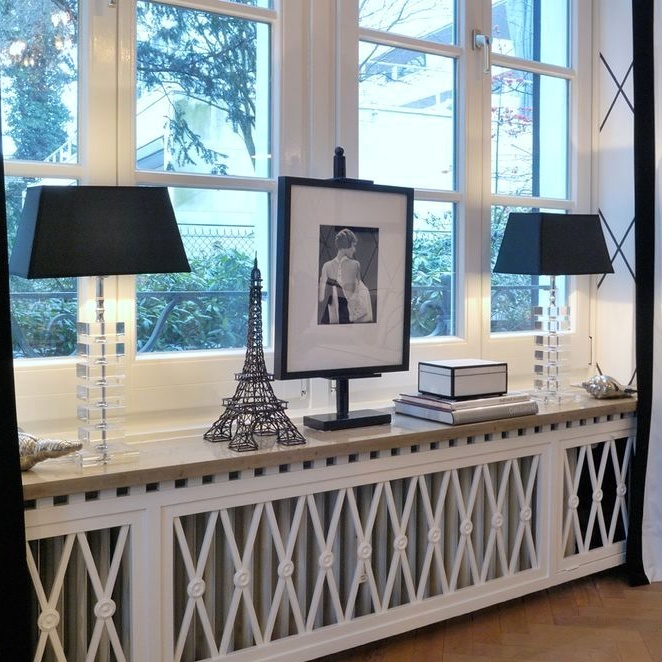
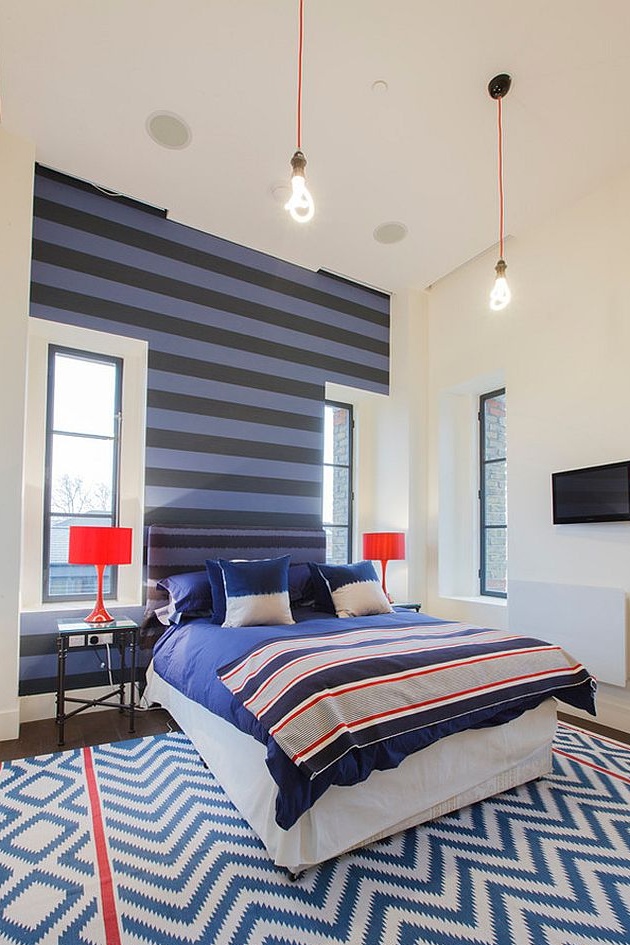
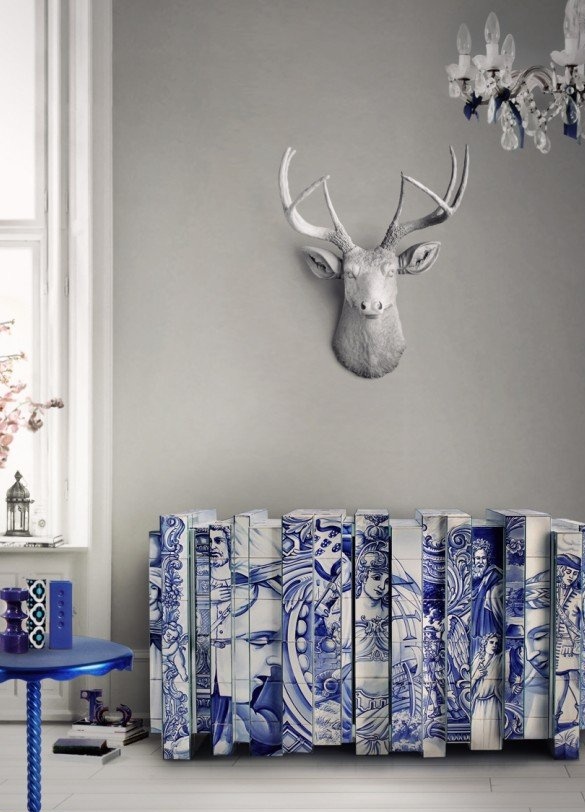
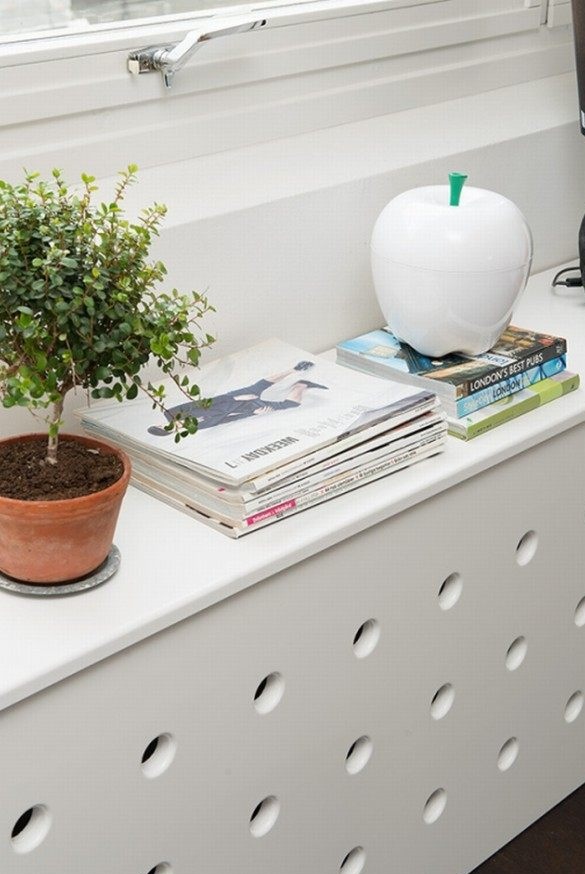
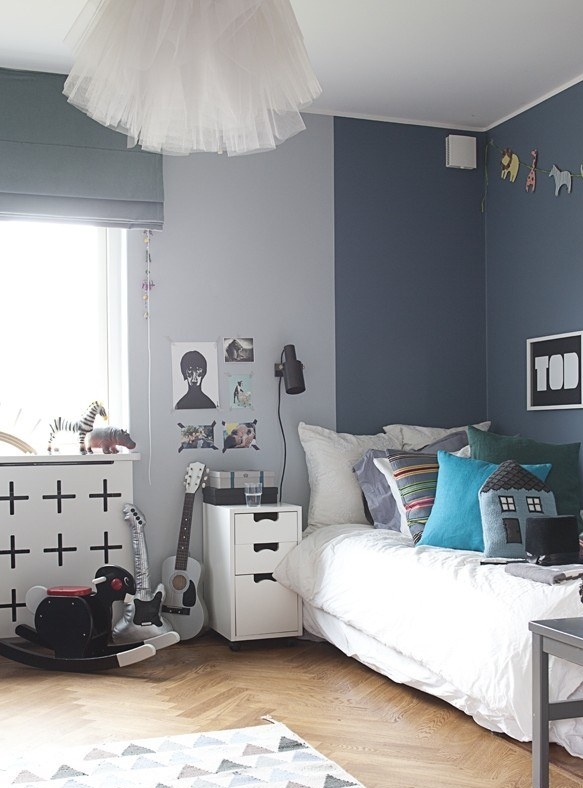
Metal screens
Metal gratings are made of steel or aluminum sheet with various perforations, which can be in the form of openwork ornaments and patterns or ordinary mesh. A standard metal screen is usually inexpensive, but designs with original stainless steel perforations can be significant amounts. Metal gratings have excellent heat dissipation, they are easy to maintain and are mounted without unnecessary trouble. Moreover, such screens are not subject to deformation from prolonged exposure to high temperatures and do not change color.
Metal grilles look great against the background of minimalism, hi-tech, industrial, rustic styles, that is, interiors where steel accents are present.
Wooden screens
Such grilles are suitable for any type of battery. They are made from natural wood of various species - from beech or oak to more expensive and valuable varieties. Rattan patterns are especially popular. Graceful carvings and the ability to cover the surface of the wood with a lacquer and colorful substance allows you to create exquisite decorative screens.
The main advantages of wooden structures are environmental safety, naturalness, excellent heat dissipation and impeccable appearance. They fit perfectly into the interior with wooden elements - from classic to avant-garde.
But it must also be said that the price of such gratings is considerable. Wooden screens can become deformed over time and require special care with wood products.
HDF, MDF and combined screens
HDF and MDF are high and medium density sheet materials. It is made by pressing fine wood under the influence of heat and pressure. Similar lattices are cheaper than models from a natural tree. Usually, the box itself is made of sheets, and the screen is made of rattan or wooden mesh. It is important to understand here that a dense mesh with a small number of holes will have poor heat transfer, therefore, special attention should be paid to the choice of mesh screen.
Glass screens
Glass screens are not often found in interiors, although they have high aesthetic capabilities. Such structures are made of tempered glass, the thickness of which is not more than 8 mm. Thanks to a special treatment, the glass is resistant to scratches and damage, and rounded corners are absolutely safe.
Most often, glass screens are produced as a single panel. Stained glass models are not cheap, acrylic glass is considered a more affordable option. Such designs are simply impressive with their diverse decorative designs. All kinds of techniques reveal the wide potential of design possibilities, allowing you to create stunning patterns, drawings, textures and stained glass.
Glass screens are easily cleaned with a conventional window cleaner. They have good heat transfer, but in some cases in this category they can be inferior to screens of another material and with perforation.
Plastic models
Plastic screens are the cheapest option of all the others, but also the most unsafe. When heated, the plastic releases harmful substances, it can smell unpleasant and even deform. Yes, and a variety of decorative plastic models do not differ. Therefore, if it is not possible to purchase better screens, it is better to leave the batteries open.
Important criteria when choosing screens for heating batteries are also the manufacturer, certification and compliance with standards. Of course, safety is above all, but external parameters are also important, because harmoniously selected screens can become a kind of decoration of the room and its highlight.
